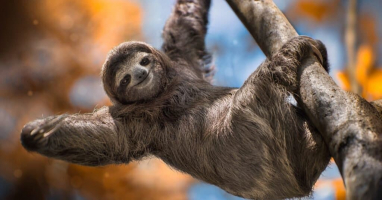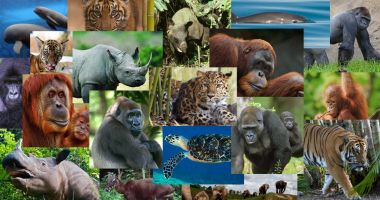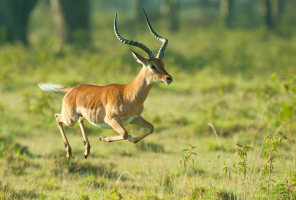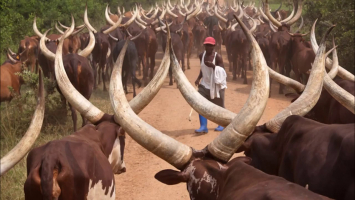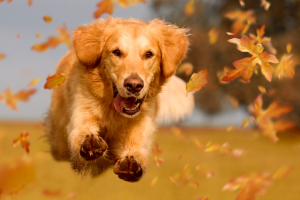Top 10 Fastest Animals In The World
Some of them soar through the air, while others swim in the water, and yet others run on land. The majority of the fastest animals are birds, so we've compiled ... read more...a list of the quickest of all these diverse creatures. These are the 10 fastest animals in the world.
-
The peregrine falcon (Falco peregrinus) is a worldwide bird of prey of the Falconidae family. It is also known as the peregrine falcon and was previously known as the duck hawk in North America. It has a blue-gray back, barred white underparts, and a black head, and is about the size of a crow. The peregrine falcon is known for its speed, reaching speeds of exceeding 320 km/h (200 mph) during its distinctive hunting stoop (high-speed plunge), making it the world's fastest bird and mammal. The maximum measured speed of a peregrine falcon is 389 km/h. Peregrine falcons are sexually dimorphic, as are most bird-eating raptors, with females being significantly larger than males. This is one of the fastest animals in the world.
The breeding range of the peregrine falcon extends from the Arctic tundra to the tropics. It can be found almost everywhere on Earth, with the exception of severe polar regions, very high mountains, and most tropical rainforests; New Zealand is the only major ice-free landmass where it is completely absent.
Speed: 200mph
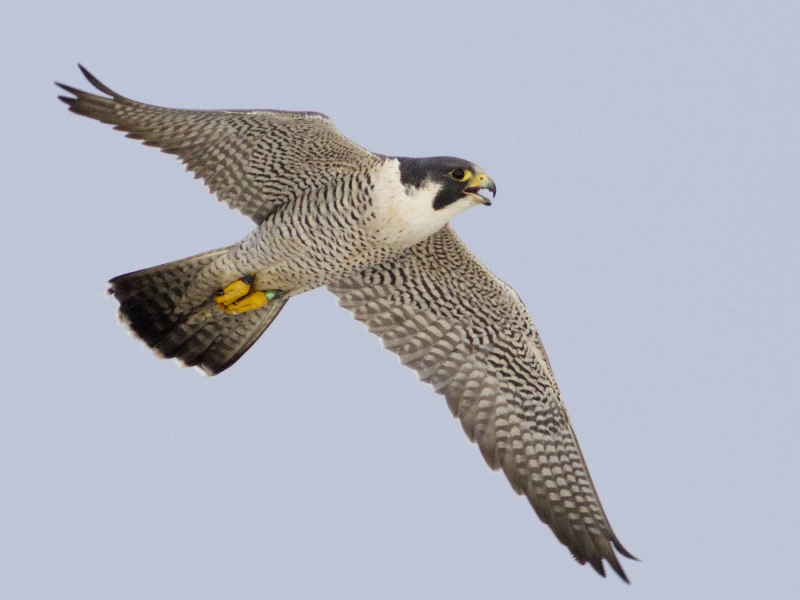
Source: eBird Source: Wonders of the World -
The white-throated needletail, commonly known as the needle-tailed or spine-tailed swift, is a big swift belonging to the Hirundapus genus. In horizontal flight, it is said to achieve speeds of up to 170 km/h (105 mph), but this is unproven because the methods used to estimate its speed have not been disclosed.
They make their nests in cliff rock cracks or hollow trees. They prefer not to sit on the ground and prefer to spend the most of their time in the air. Beetles, flies, bees, and moths are among the little flying creatures they eat.
The white-throated needletail is a migratory bird that winters in the Indian Subcontinent, Southeast Asia, and Australia. It breeds in Central Asia and southern Siberia. It is a rare vagrant in Western Europe, with records from Norway, Sweden, and the United Kingdom. After 22 years, a person was found in the United Kingdom in June of 2013. It died after colliding with a wind turbine; its body was eventually donated to a museum.
Speed: 105mph
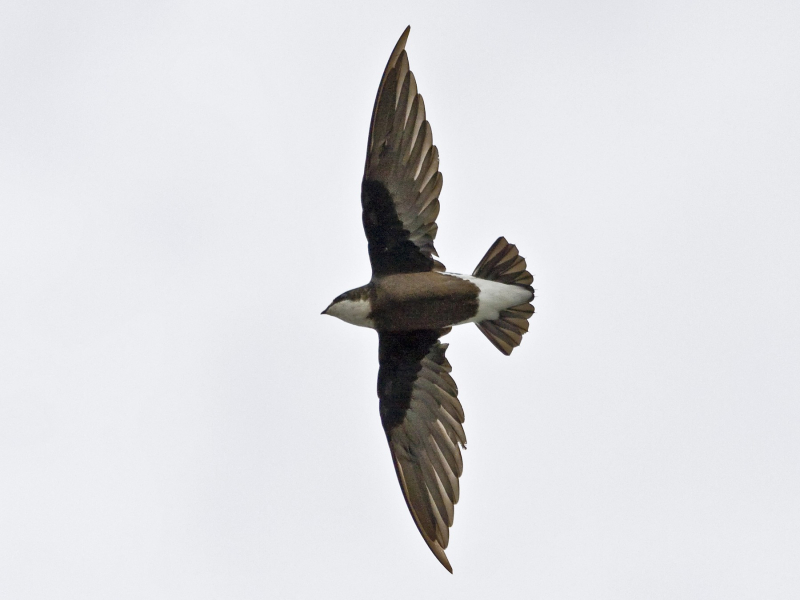
Source: eBird -
One of the fastest animals in the world, frigate birds, which belong to the Fregatidae family of seabirds, can be found in all tropical and subtropical waters. Fregata is the genus that contains all five extant species. All of them have mostly black plumage, long, forked tails, and long hooked beak. Males have a unique red gular pouch that they inflate during the breeding season to attract females, while females have white underbellies. Their long, pointed wings have the biggest wing area to body weight ratio of any bird, spanning up to 2.3 meters (7.5 feet).
Frigate birds spend much of the day in flight, looking for food, and roost at night on trees or cliffs, thanks to their ability to soar for weeks on wind currents. Fish and squid are their main prey, which they catch when large predators like tuna chase them to the water's surface. Frigate birds are regarded as kleptoparasites because they grab seabird babies from the nest and occasionally rob other seabirds for food.
Speed: 95mph
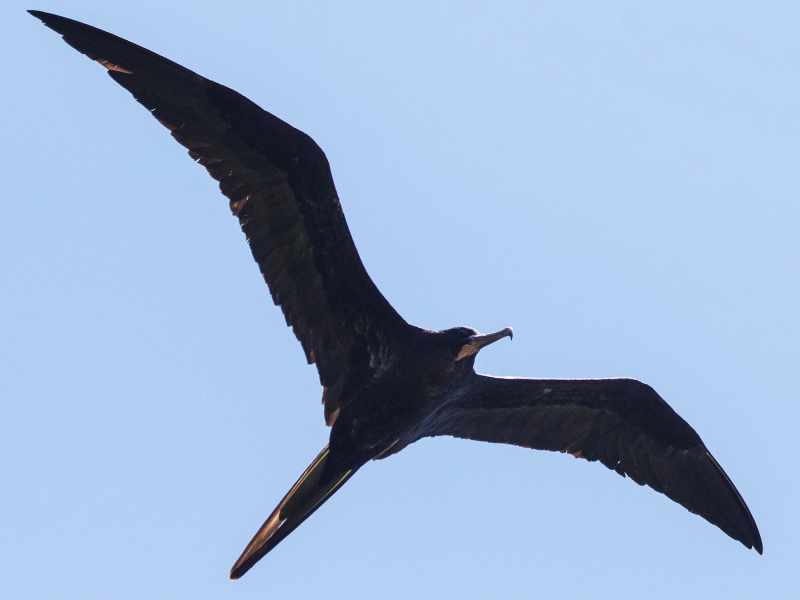
Source: eBird Source: 3 Minutes Nature -
The spur-winged goose, one of the fastest animals in the world, is a large bird in the Anatidae family, similar to geese and shelducks but unique from both in a number of anatomical traits; therefore, it is classified as a separate subfamily, the Plectropterinae. It can be found in wetlands all over Sub-Saharan Africa.
The spur-winged goose male is larger than the female and has a larger red face patch that extends back from the red bill, as well as a knob at the base of the upper mandible. In general, this is a calm species. When taking flight or disturbed, only males give a call, which consists of a faint bubbling cheewit. Both sexes may make other inconspicuous cries during breeding displays or in times of panic.
Because of its diet of blister beetles, this bird is frequently poisonous. The toxin, cantharidin, is stored in the fowl's tissue, causing poisoning in humans who consume the cooked geese. A human being can be killed by 10 mg of cantharidin.
Speed: 88mph
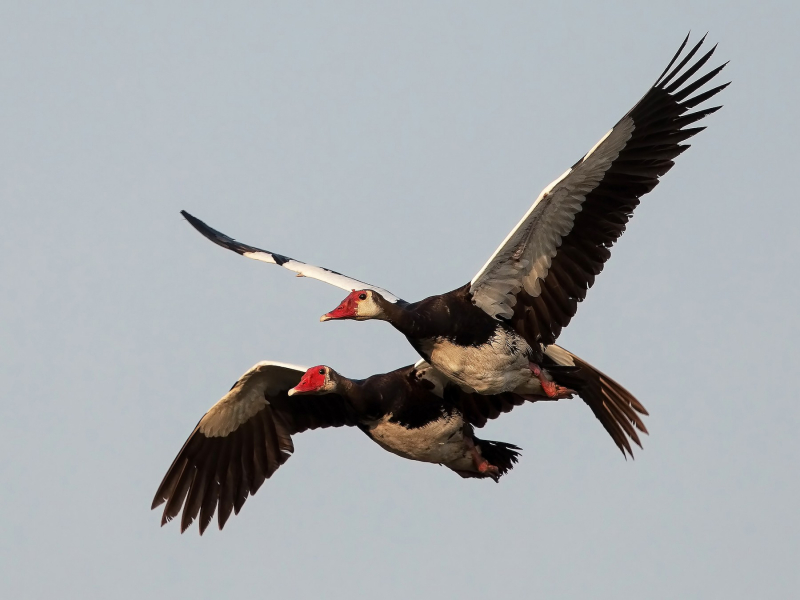
Source: eBird Source: Animal Square -
Cheetahs are huge cats that are endemic to Africa and central Iran. It is the fastest land animal, capable of speeds of 80 to 128 km/h, and has various adaptations for speed, including a light frame, long skinny legs, and a long tail.
Females with their offspring, male "coalitions," and solitary males. Males are more sedentary and may instead create much smaller territories in places with abundant prey and access to females, whilst females live a nomadic life seeking for prey in broad home ranges. Cheetahs are most active during the day, with peaks at dawn and sunset. It likes medium-sized ungulates like Impala, springbok, and Thomson's gazelles feed on small to medium-sized prey, generally weighing under 40 kg.
The cheetah can be found in a number of settings, including the Serengeti's savannahs, the Sahara's arid mountain ranges, and Iran's steep desert terrain. Habitat loss, interaction with humans, poaching, and a high sensitivity to diseases are all threats to the cheetah.
Speed: 70mph
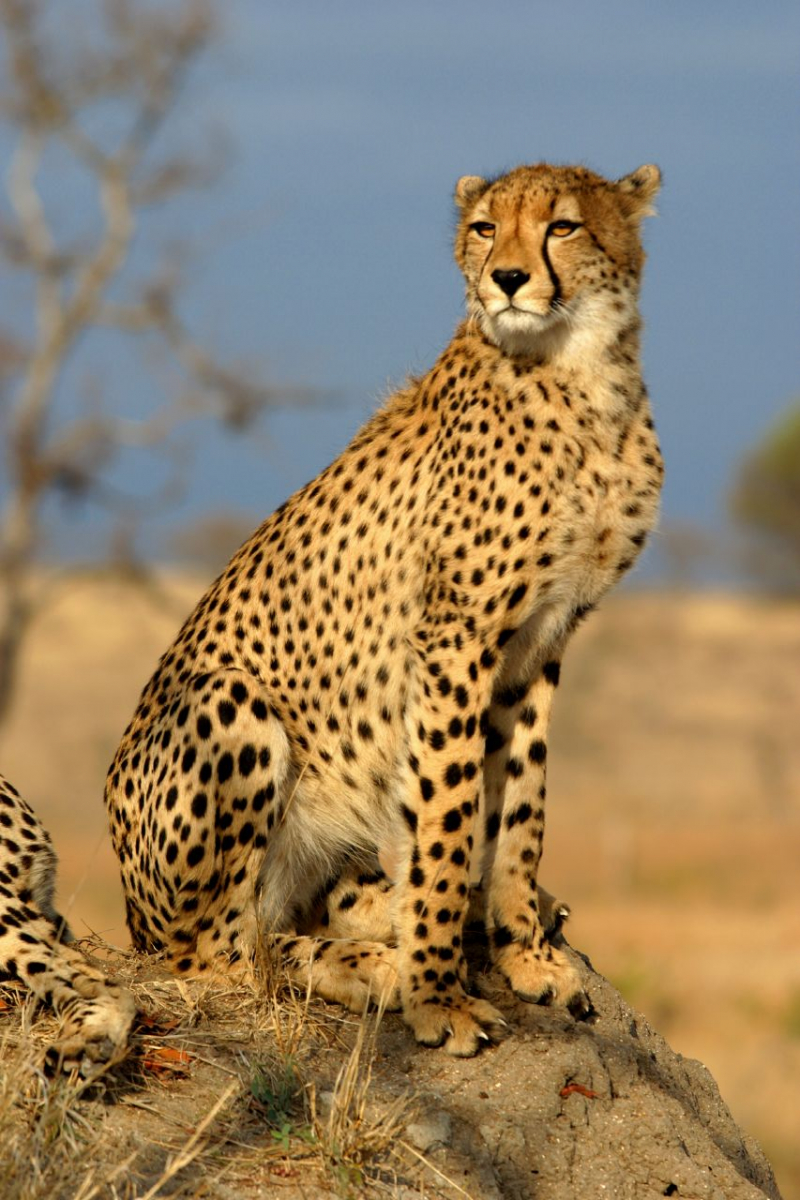
Source: Wikipedia Source: Nat Geo WILD -
A sailfish is any of the two marine fish species in the genus Istiophorus that are members of the Istiophoridae family (marlins). They are primarily blue to gray in color, with a distinctively big dorsal fin known as the sail that typically runs the length of the back. Another distinguishing feature is the elongated rostrum, which is similar to those of other marlins and swordfish, which collectively are known as billfish in sport fishing circles. Sailfish are found in the colder pelagic regions of all of the world's oceans, and they have the quickest speed of any marine mammal. This is one of the fastest animals in the world.
Many experts consider sailfish to be the fastest fish in the ocean. They develop swiftly, reaching 1.2–1.5 m in length in a single year, and graze on smaller pelagic forage fish and squid near the surface or in the intermediate depths. Sailfish were formerly thought to be capable of swimming at speeds of up to 125 km/h.
Speed: 70mph
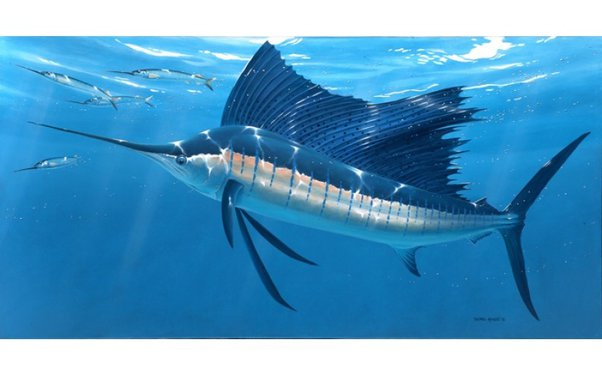
Source: Quora Source: BBC Earth -
The pronghorn is an artiodactyl (even-toed, hoofed) mammal native to western and central North America's interior. Though not an antelope, it is sometimes referred to as the American antelope, prong buck, pronghorn antelope, prairie antelope, or simply antelope in North America because it closely resembles the antelopes of the Old World and fills a comparable ecological niche due to parallel development. It is the only member of the Antilocapridae family that has survived.
The giraffe and okapi are the pronghorn's closest living cousins as members of the superfamily Giraffoidea. Pronghorns are closer relatives of the Cervidae (deer) and Bovidae (cattle, goats, sheep, antelopes, and gazelles), among others, because the Giraffoidea are members of the infraorder Pecora.
Prior to the arrival of the Europeans, the pronghorn was abundant in the Plains Indians' territory and the territory of the Northwest Plateau's indigenous peoples, and it was hunted as a primary food source by the local tribes. In Native American mythology and oral history, the pronghorn occupies an important role.
Speed: 60mph
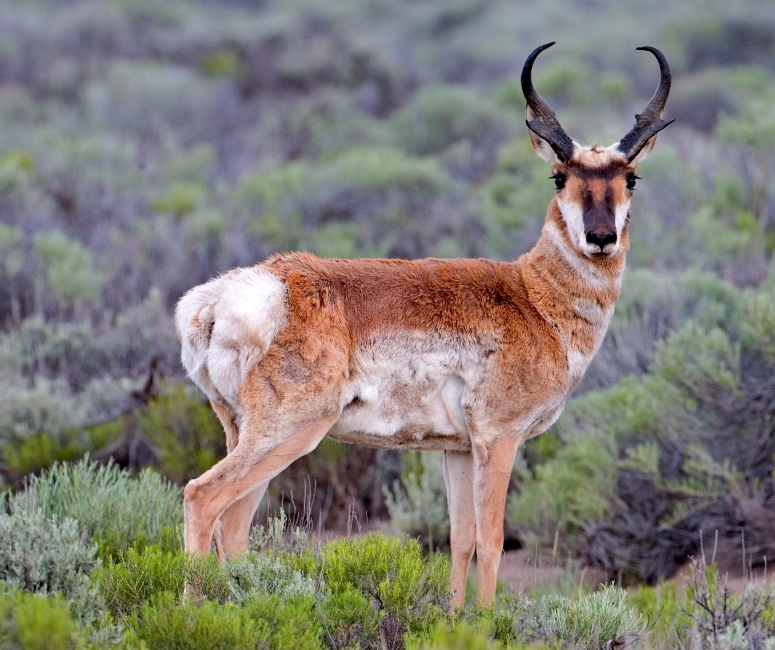
Source: Wikipedia Source: The Wild Report -
Marlins belong to the Istiophoridae family of fish, which includes roughly ten species. A marlin possesses a long, rigid dorsal fin that stretches forward to form a crest, as well as a spear-like snout or bill. It is thought that its common name comes from its similarity to a sailor's marlinspike. Marlins are among the fastest swimmers in the ocean, attaining speeds of up to 110 km/h in brief bursts. However, in popular literature, vastly exaggerated speeds are sometimes stated, based on incorrect or obsolete reports.
The Atlantic blue marlin, Makaira nigricans, can grow to be 5 meters long and weigh 820 kilograms, and the black marlin, Istiompax indica, can grow to be over 5 meters long and weigh 670 kilograms. In tropical locations, they are a popular sport fish. Overfishing has put the Atlantic blue marlin and the White marlin in jeopardy.
Speed: 60mph
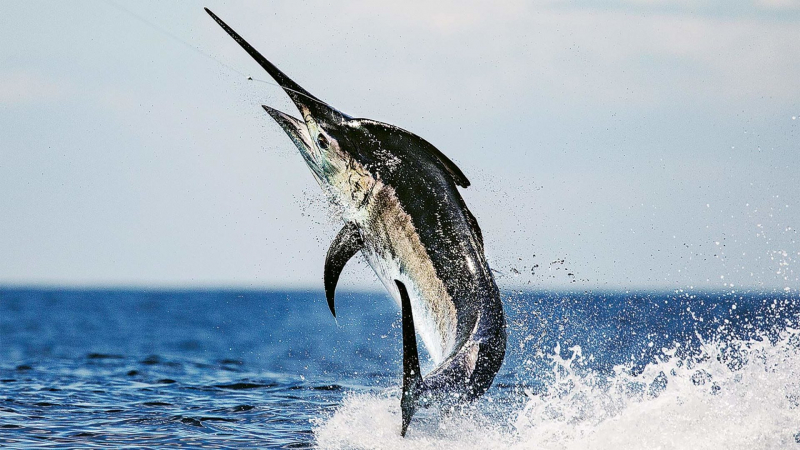
Source: Marlin Magazine 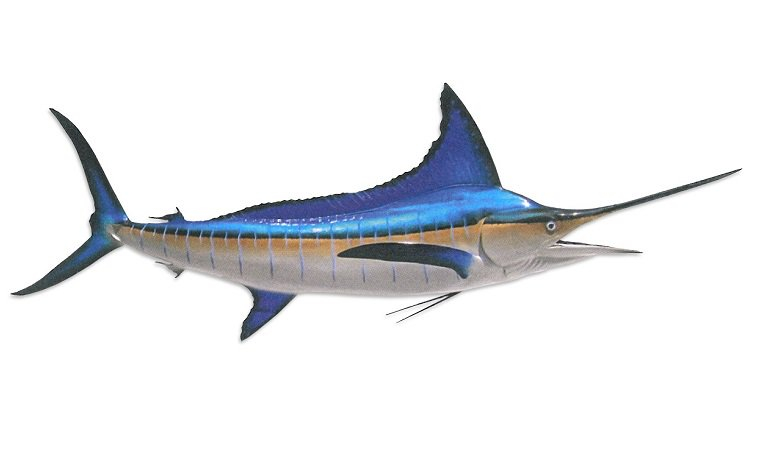
Source: Species -
The blue wildebeest is a big animal that is one of two wildebeest species. It belongs to the Connochaetes genus and the Bovidae family, and it shares a close taxonomic affinity with the black wildebeest. There are five subspecies of the blue wildebeest. With a unique, powerful muzzle, this broad-shouldered antelope has a muscular, front-heavy appearance. Blue wildebeest are born tawny brown and develop their adult color at the age of two months. The colors of the adults range from a dark slate or bluish-gray to a light gray or even a grayish-brown. A pair of big curving horns are present on both sexes.
The blue wildebeest - one of the fastest animals in the world, is mostly a herbivore that feeds on short grass. It creates herds that roam in loose aggregations, with the animals being fast runners and watchful. Mating season starts at the conclusion of the rainy season, and a single calf is normally born after an 8.5-month gestation period. The calf stays with its mother for eight months before joining a juvenile herd.
Speed: 50mph
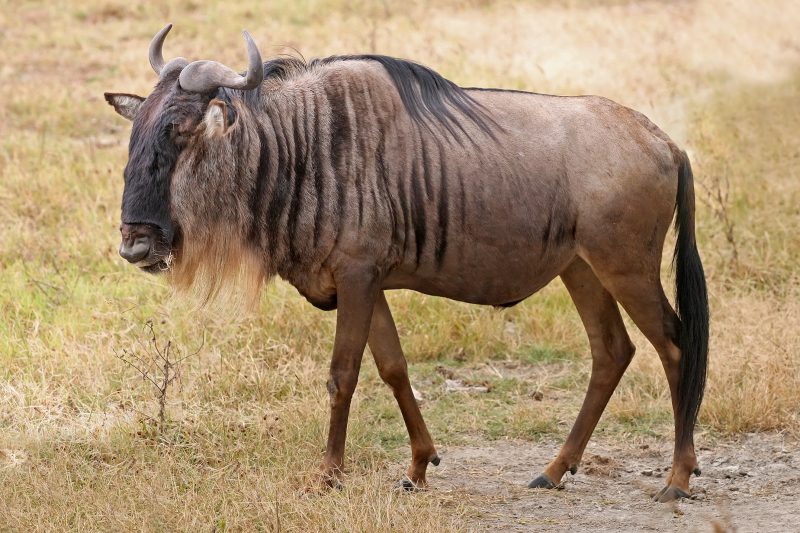
Source: Wikipedia Source: Robert Wedderburn -
The brown hare, often known as the European hare, is a hare species found in Europe and Asia. It is one of the largest hare species and is adaptable to open territory in temperate climates. Hares are herbivores who eat mostly grasses and plants, but also twigs, buds, bark, and field crops, especially in the winter. Large birds of prey, canids, and felids are among their natural predators. Because of their long, muscular limbs and big noses, they rely on high-speed endurance sprinting to avoid predators.
Hares, who are normally nocturnal and shy, change their habits in the spring, when they can be seen chasing each other about in fields in broad daylight. They sometimes hit each other with their paws during this spring frenzy ("boxing"). This is usually not a male-on-male fight, but rather a female hitting a male to demonstrate she isn't ready to mate or to test his resolve. The female builds her nest in a depression on the ground rather than in a burrow, and the young are active very immediately after birth.
Speed: 48mph
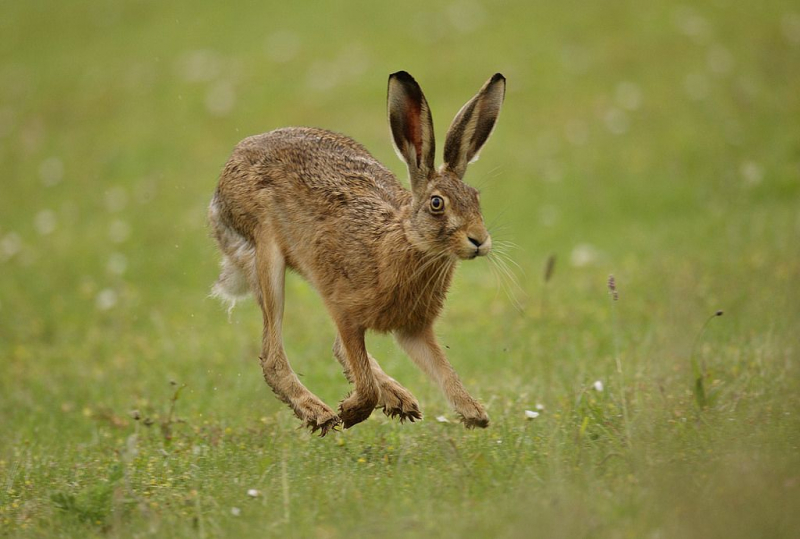
Source: Pinterest Source: Steve Evans














